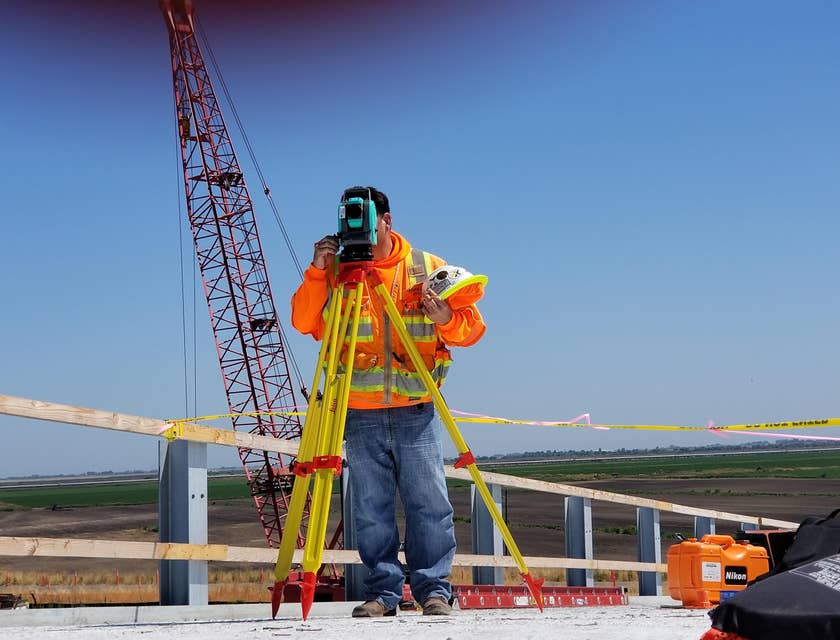4)Construction and Building Inspectors
- Review plans to ensure they meet building codes, local ordinances, zoning regulations, and contract specifications.
- Approve building plans that are satisfactory.
- Monitor construction sites periodically to ensure overall compliance.
- Use survey instruments, metering devices, and test equipment to perform inspections.
- Inspect plumbing, electrical, and other systems to ensure that they meet code.
- Verify alignment, level, and elevation of structures to ensure building meets specifications.
- Issue violation notices and stop-work orders until building is compliant.
- Keep daily logs, including photographs taken during inspections.
- Provide written documentation of findings.
People want to live and work in safe places, and construction and building inspectors ensure that construction meets codified requirements. Construction and building inspectors examine buildings, highways and streets, sewer and water systems, dams, bridges, and other structures. They also inspect electrical; heating, ventilation, air-conditioning, and refrigeration (HVACR); and plumbing systems. Although no two inspections are alike, inspectors perform an initial check during the first phase of construction and follow-up inspections throughout the construction project. When the project is finished, they perform a final, comprehensive inspection and provide written and oral feedback related to their findings.
The following are examples of types of construction and building inspectors:
Building inspectors >> >> check the structural quality and general safety of buildings. Some specialize further, inspecting only structural steel or reinforced-concrete structures, for example.
Coating inspectors >> >> examine the exterior paint and coating on bridges, pipelines, and large holding tanks. Inspectors perform checks at various stages of the painting process to ensure proper coating.
Electrical inspectors >> >> examine the installed electrical systems to ensure they function properly and comply with electrical codes and standards. The inspectors visit worksites to inspect new and existing sound and security systems, wiring, lighting, motors, photovoltaic systems, and generating equipment. They also inspect the installed electrical wiring for HVACR systems and appliances.
Elevator inspectors>>>> examine lifting and conveying devices, such as elevators, escalators, moving sidewalks, lifts and hoists, inclined railways, ski lifts, and amusement rides. The inspections include both the mechanical and electrical control systems.
Home inspectors >>>> typically inspect newly built or previously owned homes, condominiums, townhomes, and other dwellings. Prospective home buyers often hire home inspectors to check and report on a home’s structure and overall condition. Sometimes, homeowners hire a home inspector to evaluate their home’s condition before placing it on the market.
In addition to examining structural quality, home inspectors examine all home systems and features, including the roof, exterior walls, attached garage or carport, foundation, interior walls, plumbing, electrical, and HVACR systems. They look for violations of building codes, but home inspectors do not have the power to enforce compliance with the codes.
Mechanical inspectors >>>> examine the installation of HVACR systems and equipment to ensure that they are installed and function properly. They also may inspect commercial kitchen equipment, gas-fired appliances, and boilers. Mechanical inspectors should not be confused with quality control inspectors, who inspect goods at manufacturing plants.
Plan examiners >>>> determine whether the plans for a building or other structure comply with building codes. They also determine whether the structure is suited to the engineering and environmental demands of the building site.
Plumbing inspectors >>>>examine the installation of systems that ensure the safety and health of drinking water, the sanitary disposal of waste, and the safety of industrial piping.
Public works inspectors >>>>ensure that the construction of federal, state, and local government water and sewer systems, highways, streets, bridges, and dams conforms to detailed contract specifications. Workers inspect excavation and fill operations, the placement of forms for concrete, concrete mixing and pouring, asphalt paving, and grading operations. Public works inspectors may specialize in highways, structural steel, reinforced concrete, or ditches. Others may specialize in dredging operations required for bridges, dams, or harbors.
Specification inspectors >>>>ensure that construction work is performed according to design specifications. Specification inspectors represent the owner’s interests, not those of the general public. Insurance companies and financial institutions also may use their services.





























